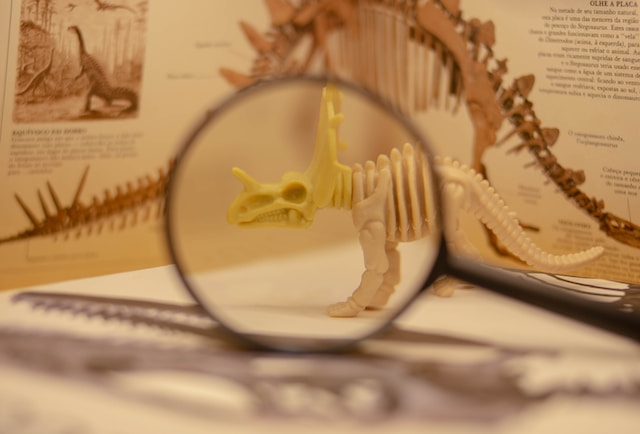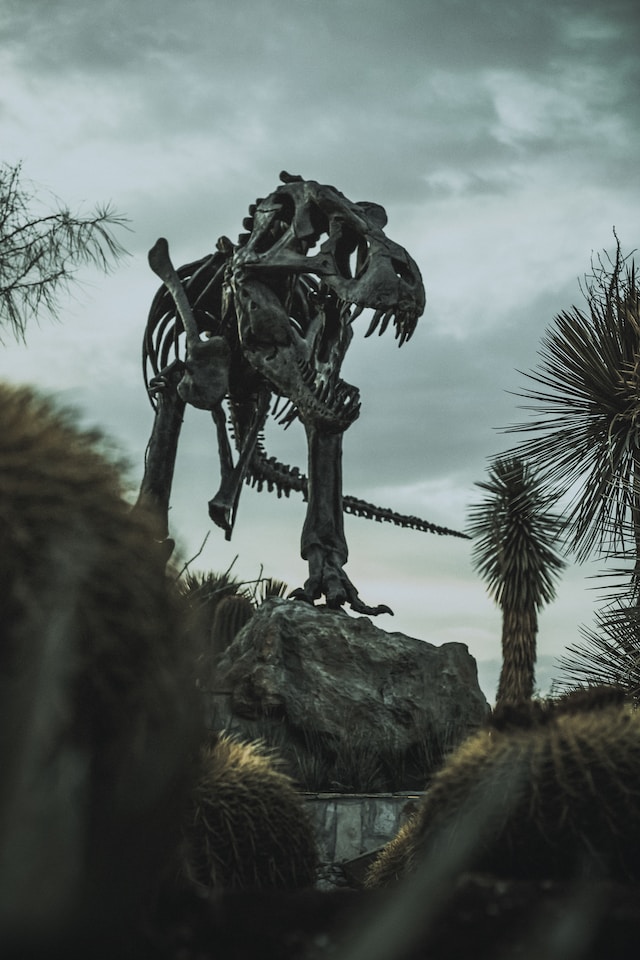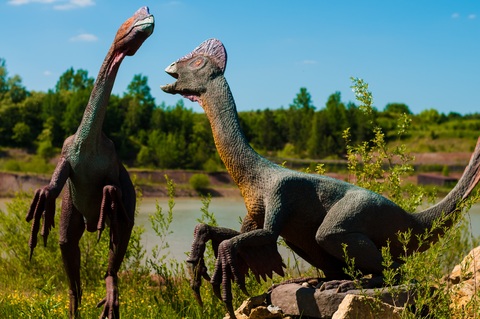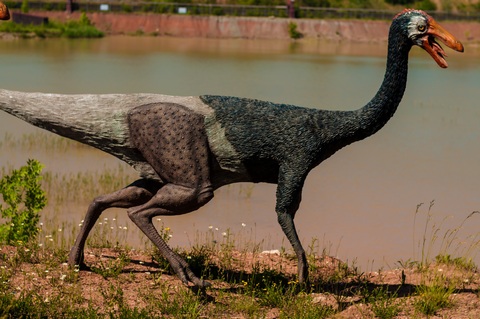Header image: Meet the media Guru from Milan, Italy, CC BY-SA 2.0, via Wikimedia Commons
“I know what I can do and what I can’t do, and for the things I can’t do, I try to find someone to help. I think that’s really important, and it’s something I stress to people like me.”
Who is Jack Horner?
Jack Horner is a leading paleontologist from Shelby, Montana who discovered the first dinosaur eggs in the Western Hemisphere, provided evidence that dinosaurs were social, nested, and cared for their young, and made many other paleological achievements.
Instead of holding him back, Jack Horner’s struggles with dyslexia accelerated his development, pushed him to make incredible achievements, and allowed him to have fun along the way.
In this article:
- 10 wild facts about Jack Horner
- Who is Jack Horner? Where is Jack Horner from?
- Life on the Montana plains
- Not quite fitting in
- His first museum job
- Beating the odds
- Teaching at university and continued research
- Passing on what he’s learned
- Who does he credit?
- What does Jack Horner do now?
Before we dive into his incredible life story, check out these ten facts about Jack Horner’s life.
Who is Jack Horner? – 10 wild facts about Jack Horner
- He was born and raised in Shelby, Montana
- In the 1970s, he found in Montana the first dinosaur eggs ever discovered in the Western Hemisphere
- He provided the first definitive evidence that dinosaurs nested, were social, and cared for their young
- He was the first to introduce the idea that dinosaurs were more similar to birds than reptiles
- He was a Jurassic Park dinosaur paleontology consultant (for the Jurrasic Park films)
- Steven Spielberg based Dr. Alan Grant, from the film Jurassic Park, on Jack Horner
- He is a recipient of a MacArthur “Genius” Award
- He didn’t graduate from university in the traditional fashion. Due to learning struggles, he didn’t complete his degree. He relentlessly took classes, returning to school quarter after quarter, taking numerous courses, and absorbing knowledge. MSU awarded him with an Honorary Doctorate of Science in 1986.
- He has named the following dinosaurs:
- Mauisaura (with partner Bob Makela)
- Achelousaurus horneri
- Anasazisaurus horneri
- Daspletosaurus horneri
- Orodromeus makelai.
- He had a cameo in the film Jurassic World as a paddock worker at the Velociraptor Paddock
Let’s dive into his interesting life story.
Who is Jack Horner? Where is Jack Horner from?

Jack Horner was born in Shelby, Montana, and grew up on the eastern plains of Montana where many of the world’s dinosaur bones have been found, including several T-rex fossils. From his youngest years, he dreamed of doing one thing with his life – becoming a paleontologist.
By the time Horner was an adult, he had found a position as a full-time teacher at Montana State University in Bozeman, Montana, discovered the first dinosaur eggs found in the Western Hemisphere, lead multiple research projects, and was the paleontologist that served as the technical advisor on five of the Jurassic World films.
However, none of it came to him easily.
Life on the Montana plains, early life

Jack Horner was eight years old when he found his first dinosaur bone. But Jack Horner’s education was challenging.
He was shy as a child, and described school as,
“difficult, because everybody called me dumb, but I knew very early on that I could do things other students couldn’t do.”
In his article, “An Intellectual Autobiography”, Horner describes grade school as,
“extremely difficult because my progress in reading, writing, and mathematics was excruciatingly slow.”
However, there was one area in which Horner excelled: science projects, which his mother fully supported.
His award-winning high school science fair projects included:
- A rocket that soared thousands of feet in the air
- A Van de Graff generator
- A Tesla Coil that produced high-voltage arcs
His senior project compared Montana fossils with fossils in Alberta, Canada, and took top honors at the state fair, earning him an invitation to enroll at the University of Montana (U of M).
His D-average high school GPA was enough to get him into university, so he enrolled at U of M in the fall of 1964 planning to major in Geology.
By 1965, he had flunked out.
Discover more: The best places to stargaze in Montana
Not quite fitting in (Who is Jack Horner?)

“We spatial thinkers fail tests given by linear thinkers because we don’t think in terms of time or in terms of written text. Instead, our perception is multidimensional, and we do best when we can touch, observe, and analyze.”
– Jack Horner, The Extraordinary Characteristics of Dyslexia
When he flunked out of university in 1965, Horner was then Drafted by the Marines and served two years in Vietnam.
He worked in reconnaissance, with a 14-month stint in the demilitarized zone.
Upon his release, he returned to the U of M where he failed five successive quarters, and received repeated “pink slips” from the Dean of Students.
Nonetheless, his advisor, James Peterson, wrote him letters of support,
“[He] believed I wasn’t lazy, and he wrote letters of support for my quarterly returns to school.”
But he left in 1972 – without a degree,
“I didn’t finish college”, he says, “but did take all the geology and zoology courses that I thought would pertain to paleontology. I also took a few courses in archaeology, microbiology, and even attempted English, but failed. When I left the University I believed I was as good a geologist and paleontologist as any other student at the doctoral level.”
He had also completed a research paper covering the geology and paleontology of a stratum in Central Montana containing 300-million-year-old fish, and published three professional papers based on the research.
Despite having no official university degree, he knew he could follow his own path and held on to his dreams,
“My goal in life was simple: I wanted to be a dinosaur paleontologist and make some kind of contribution to the field of paleontology that would help our understanding of dinosaurs as living creatures. To accomplish this, I knew I needed a job in a museum, but I also realized that with my college grades and no degree, I might never get such a job.”
– Jack Horner, An Intellectual Biography
Discover more: How robots test Montana’s waterways for invasive species
His first museum job (Who is Jack Horner?)
While earning a living driving trucks (lorries), he applied at every museum he could, worldwide.
He was accepted by three of them:
- Los Angeles County Museum
- Royal Ontario Museum in Toronto
- Princeton University’s Natural History Museum
“I made my decision not on the basis of rank or pay, but on where I’d rather live,” Horner says.
At Princeton, Horner worked as a technician with the museum director on research projects and exhibits.
He was quickly promoted to research assistant, managed his own research projects with funding from the National Science Foundation, and wrote his own grant applications.
He was a full member of the university’s paleontological research faculty, but he couldn’t sign the application because he still had no Ph.D.
Discover more: Why is Montana called the Treasure State? Find out here
Beating the odds (Who is Jack Horner?)

One day at Princeton, Horner saw a poster asking questions like, “Is reading difficult?” and “Would you rather watch a movie than read a book?”. If you’d answered yes to any of these questions, then they would test you for certain conditions.
Horner took the test and learned he had dyslexia.
While it didn’t improve his reading abilities, the test results provided some clarity.
In his words,
“I would probably never be able to pass even a simple college class, at least without having extraordinarily long periods of time to read and comprehend.”
Writing is also a challenge for him – he uses a co-author to do the writing while he handles the science,
“I know what I can do and what I can’t do, and for the things I can’t do, I try to find someone to help. I think that’s really important, and it’s something I stress to people like me.”
Teaching at university and continued research (Who is Jack Horner?)

By 1982, Jack Horner had left Princeton for a teaching position at Montana State University (MSU) in Bozeman, Montana.
He enjoyed a fruitful thirty-three-year career at MSU, where he became the Regent’s Professor of Paleontology Emeritus in the Department of Earth Sciences.
He became the Curator of Paleontology at the Museum of the Rockies in Bozeman and, in 1986, he received an honorary doctorate from MSU.
In the early 1990s, Steven Spielberg enlisted Horner to serve as a dinosaur consultant on the Jurrasic Park films. Horner continued to advise on four subsequent Jurassic World films.
With consistent funding, a growing number of graduate students, and more and more classes emerging over the years Horner worked at MSU, the program grew.
“In 1993, I had 18 graduate students working virtually all over Montana and Northern Wyoming”, he says. “Montana State University had become a paleontology Mecca; the largest dinosaur research program in the United States”.
Discover more: Which snakes live in Montana? Find out here
Passing on what he’s learned (Who is Jack Horner?)

“We don’t meet the expectations of linear thinkers and are free to take risks. We are the people who most often follow our dreams, who think differently, spatially, inquisitively.”
– Jack Horner, The Extraordinary Characteristics of Dyslexia
Besides various graduate and undergraduate courses, he also taught a freshman literature course where students read assigned texts and interpreted them using a variety of mediums – a spatial, image-based way of learning, rather than a linear, word-based one.
“Most spatial thinkers are extremely visual, highly imaginative, and work in three dimensions, none of which have anything to do with time. Linear thinkers generally operate in a two-dimensional world where time is of the utmost importance.”
– Jack Horner, The Extraordinary Characteristics of Dyslexia
He believes this accounts for their accomplishments.
Discover more: Who are the Amish of Montana? Find out here
Who does he credit? (Who is Jack Horner?)

“Personally,” says Horner, “I think dyslexia and the consequences of dyslexia — learning to deal with failure — explain my own success. From my failures, I’ve learned where I need help, such as in reading and math. But I’ve also learned from my accomplishments what I’m better at than the linear thinkers.”
Horner also credits his mother and his supportive teachers over the years. They created “paths” that allowed him to work within the parameters of his skillset and abilities.
Some teachers created barriers, such as time-based reading and writing assignments, which helped.
Nevertheless, Horner isn’t fond of the label,
“I don’t care much for the word dyslexia. I generally think of ‘us’ as spatial thinkers, and of non-dyslexics as linear thinkers, people who could be described as being dys-spatios.”
– Jack Horner, The Extraordinary Characteristics of Dyslexia
According to Horner, both have learning talents and face unique challenges.
Perhaps he’s on to something.
Discover more: 25 songs about Montana that make you feel like you’re there – Listen here
What does Jack Horner do now?
As far as we gathered, Jack Horner currently splits his time between Chapman University in Orange, California, and his home state of Montana.
Horner retired from teaching in 2016 and has served as Presidential Fellow at the Chapman University Honors Program since 2017.
In addition to collaborating with Universal, Microsoft, Merge VR, and other companies, he recently released a set of NFTs depicting his vision of how dinosaurs actually looked – bright, colorful, featherlike creatures, more similar to birds than reptiles.
Something like this:



FAQ – Who is Jack Horner?
Below are answers to several commonly asked questions about Jack Horner.
Where is Jack Horner from?
Jack Horner the paleontologist is originally from Shelby, Montana. He grew up in Montana, then lived for four years in Princeton, New Jersey, working as a technician for Princeton University’s Natural History Museum. In 1982, he moved to Bozeman, Montana for a teaching position at MSU.
How old is Jack Horner?
Jack Horner was born in 1946. As of 2023, he is 74 years old.
Where does Jack Horner live?
Since retiring in 2016, Jack Horner has split his time between Bozeman, Montana, and Orange, California. He currently serves as Presidential Fellow at Chapman University in Orange.
When was Jack Horner born?
Jack Horner was born in 1946.
What is Jack Horner famous for?
Jack Horner is a paleontologist from Shelby, Montana who is known for discovering the first dinosaur eggs found in the Western Hemisphere. He also determined that dinosaurs nested, were social, and cared for their young.
Jack Horner is also known for his conclusions about dinosaur appearances. Contrary to traditional schools of thought, he believes dinosaurs were colorful, feathered creatures, similar to birds.

